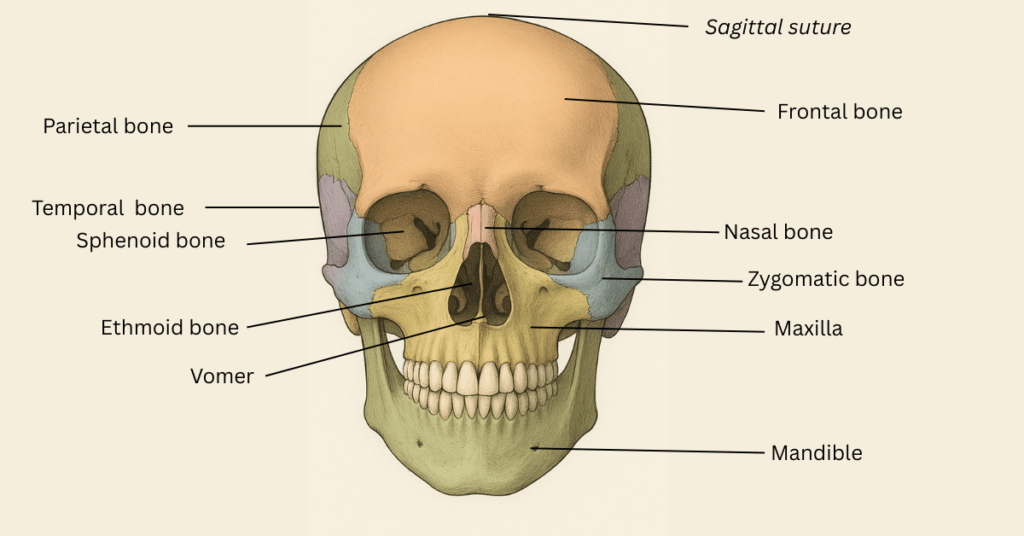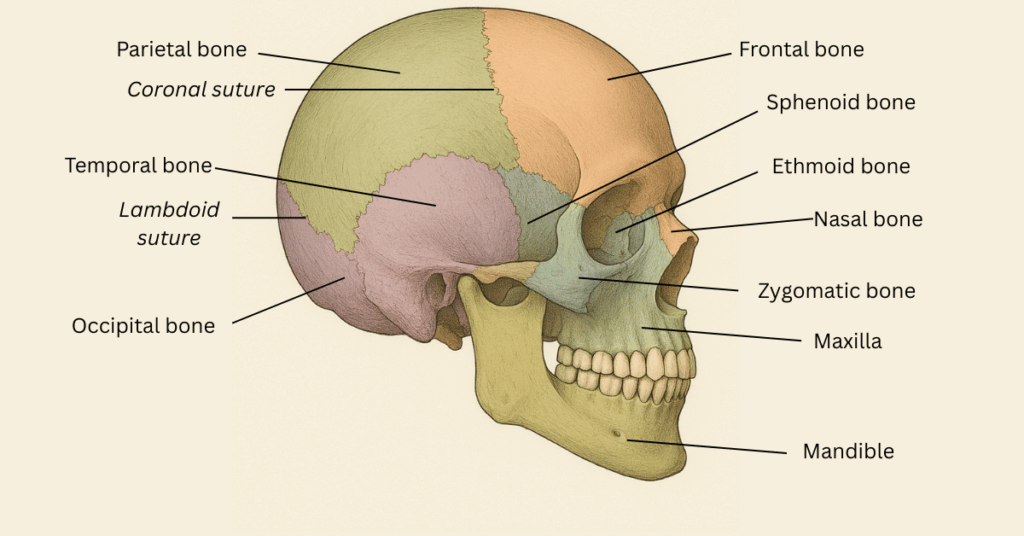The human skull is a complex bony structure that protects the brain and supports the face. It is made up of 22 bones, which are mainly grouped into 8 cranial bones (forming the cranium) and 14 facial bones (forming the face).
The skull’s bones are mostly fused by sutures (ossified joints) to form a protective shell for the brain and provide support for the face.

Cranial Bones (8 total)
These enclose and protect the brain.
- Frontal bone (1): Forms the forehead, roof of the orbits (eye sockets), and part of the cranial floor.
- Parietal bones (2): Large paired bones forming the sides and roof of the cranium.
- Temporal bones (2): Found at the sides and base of the skull; house the ear structures and form the zygomatic arch with the cheekbone.
- Occipital bone (1): Forms the back and base of the skull; contains the foramen magnum where the spinal cord passes.
- Sphenoid bone (1): A butterfly-shaped bone at the skull’s base; contributes to the cranial floor and sides of the orbits.
- Ethmoid bone (1): Light, spongy bone between the eyes; contributes to the nasal cavity and medial walls of the orbits.

Facial Bones (14 total)
These give shape to the face and house teeth and other sensory structures.
- Nasal bones (2): Small bones forming the bridge of the nose.
- Maxillae (2): Upper jaw bones; form part of the hard palate, orbits, and nasal cavity.
- Zygomatic bones (2): Cheekbones; form the zygomatic arch with the temporal bone.
- Lacrimal bones (2): Small bones forming part of the medial orbit walls, near the tear ducts.
- Palatine bones (2): Form the posterior part of the hard palate and part of the nasal cavity.
- Inferior nasal conchae (2): Curved bones inside the nasal cavity that help filter and humidify air.
- Vomer (1): Thin, flat bone forming part of the nasal septum.
- Mandible (1): Lower jawbone; the only movable bone of the skull.
Sutures of the Skull
Sutures are fibrous joints that connect the bones of the skull, serving as flexible connections in infancy and childhood to allow for brain growth.
The main sutures in the adult skull are:
- Coronal suture – fuses the frontal bone with the two parietal bones.
- Sagittal suture – fuses both parietal bones to each other.
- Lambdoid suture – fuses the occipital bone to the two parietal bones.
Functions of Skull Sutures
- Accommodate brain growth: Sutures allow the bones to move, which gives the brain room to grow and expand rapidly during infancy and childhood.
- Aid in birth process: The flexibility of the sutures helps the skull deform slightly, allowing the baby to pass through the birth canal.
- Protect the brain: By keeping the skull bones together, sutures help to hold the bony structure of the skull in place, providing protection for the brain from impact



